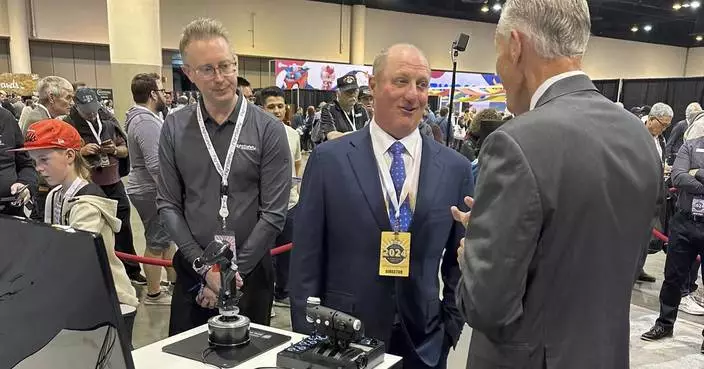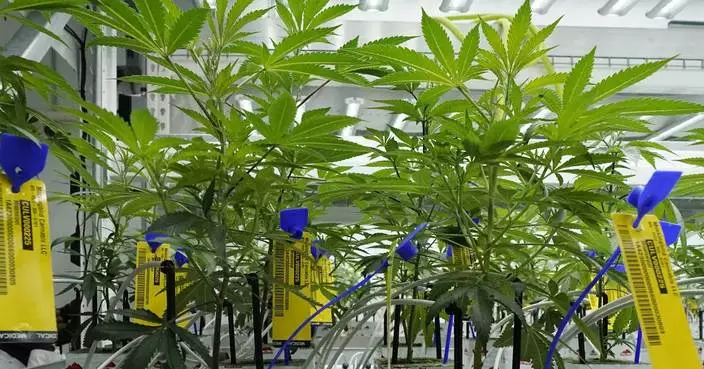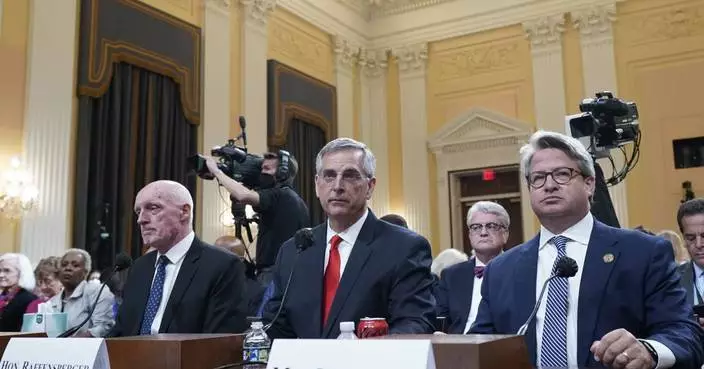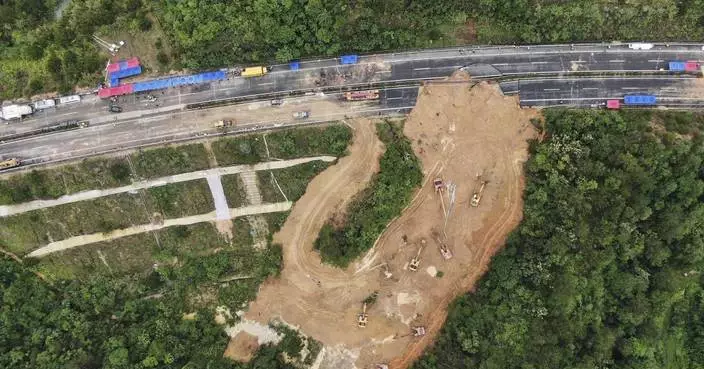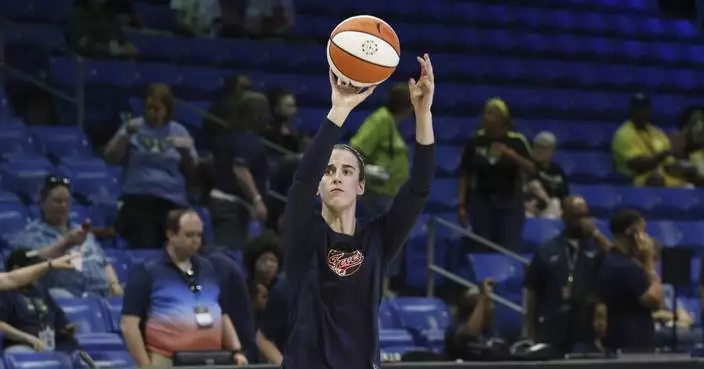U.S. health and agriculture officials are ramping up testing and tracking of bird flu in dairy cows in an urgent effort to understand — and stop — the growing outbreak.
So far, the risk to humans remains low, officials said, but scientists are wary that the virus could change to spread more easily among people.
The virus, known as Type A H5N1, has been detected in nearly three dozen dairy herds in eight states. Inactive viral remnants have been found in grocery store milk. Tests also show the virus is spreading between cows, including those that don't show symptoms, and between cows and birds, according to the U.S. Department of Agriculture.
Starting Monday, hundreds of thousands of lactating dairy cows in the U.S. will have to be tested — with negative results — before they can be moved between states, under terms of a new federal order.
Here's what you need to know about the ongoing bird flu investigation:
This strain of what's known as highly pathogenic avian influenza has been circulating in wild birds for decades. In recent years, it has been detected in scores of mammals around the world. Most have been wild animals, such as foxes and bears, that ate sick or dying birds. But it's also appeared in farmed minks. It's shown up in aquatic mammals, such as harbor seals and porpoises, too. The virus was even found in a polar bear in northern Alaska.
The virus was discovered in ruminants — goats and then dairy cows — in the U.S. this spring, surprising many scientists who have studied it for years.
“When we think of influenza A, cows are not typically in that conversation,” said Richard Webby, an influenza expert at St. Jude Children’s Research Hospital.
Flu viruses are notorious for adapting to spread among new species, so detection in dairy cows raises concerns it could spread to people, Webby said.
Scientists confirmed the virus in cows in March after weeks of reports from dairy farms that the animals were falling ill. Symptoms included lethargy, sharply reduced milk supply and changes to the milk, which became thick and yellow.
Finding remnants of the virus in milk on the market “suggests that this has been going on longer, and is more widespread, than we have previously recognized,” said Matthew Aliota, a veterinary medicine researcher at the University of Minnesota.
Under pressure from scientists, USDA officials released new genetic data about the outbreak this week.
The data omitted some information about when and where samples were collected, but showed that the virus likely was spread by birds to cattle late last year, said Michael Worobey, an evolutionary biologist with the University of Arizona.
Since then, it has spread among cattle and among farms, likely through contact with physical objects such as workers' shoes, trucks or milking machines, Worobey said.
And then the cows spread the virus back to birds, he said.
“The genetic evidence is as clear as could be,” Worobey said. "Birds that are sampled on these farms have viruses with clear mammalian adaptations."
Several experts said the USDA's plans to require testing in cows are a good start.
“We need to be able to do greater surveillance so that we know what's going on,” said Thomas Friedrich, a virology professor at the University of Wisconsin's veterinary school.
Worobey said the ideal would be to screen every herd. Besides looking for active infections, agriculture officials also should be looking at whether cows have antibodies to the virus, indicating past infections, he said.
"That is a really accessible and quick way to find out how widespread this is,” he said.
More testing of workers exposed to infected animals is also crucial, experts said. Some farm owners and some individual workers have been reluctant to work with public health officials during the outbreak, experts have said.
“Increased surveillance is essentially an early warning system,” Aliota said. “It helps to characterize the scope of the problem, but also to head off potentially adverse consequences."
Scientists are working to analyze more samples of retail milk to confirm that pasteurization, or heat-treating, kills the H5N1 virus, said Dr. Don Prater, acting director of the FDA's food safety center. Those results are expected soon.
While the general public doesn't need to worry about drinking pasteurized milk, experts said they should avoid raw or unpasteurized milk.
Also, dairy farm workers should consider extra precautions, such as masking, hand washing and changing work clothes, Aliota said.
So far, 23 people have been tested for the virus during the outbreak in dairy cows, with one person testing positive for a mild eye infection, CDC officials said. At least 44 people who were exposed to infected animals in the current outbreak are being monitored for symptoms.
David O’Connor, a virology expert at the University of Wisconsin-Madison, likened recent bird flu developments to a tornado watch versus a warning.
“There are some of the ingredients that would be necessary for there to be a threat, but we’re not there,” he said. As with a tornado watch, "you wouldn’t change anything about how you live your daily life, but you would maybe just have a bit of increased awareness that something is happening.”
Worobey said this is the kind of outbreak “that we were hoping, after COVID, would not go unnoticed. But it has."
He said ambitious screening is needed "to detect things like this very quickly, and potentially nip them in the bud.”
The Associated Press Health and Science Department receives support from the Howard Hughes Medical Institute’s Science and Educational Media Group. The AP is solely responsible for all content.
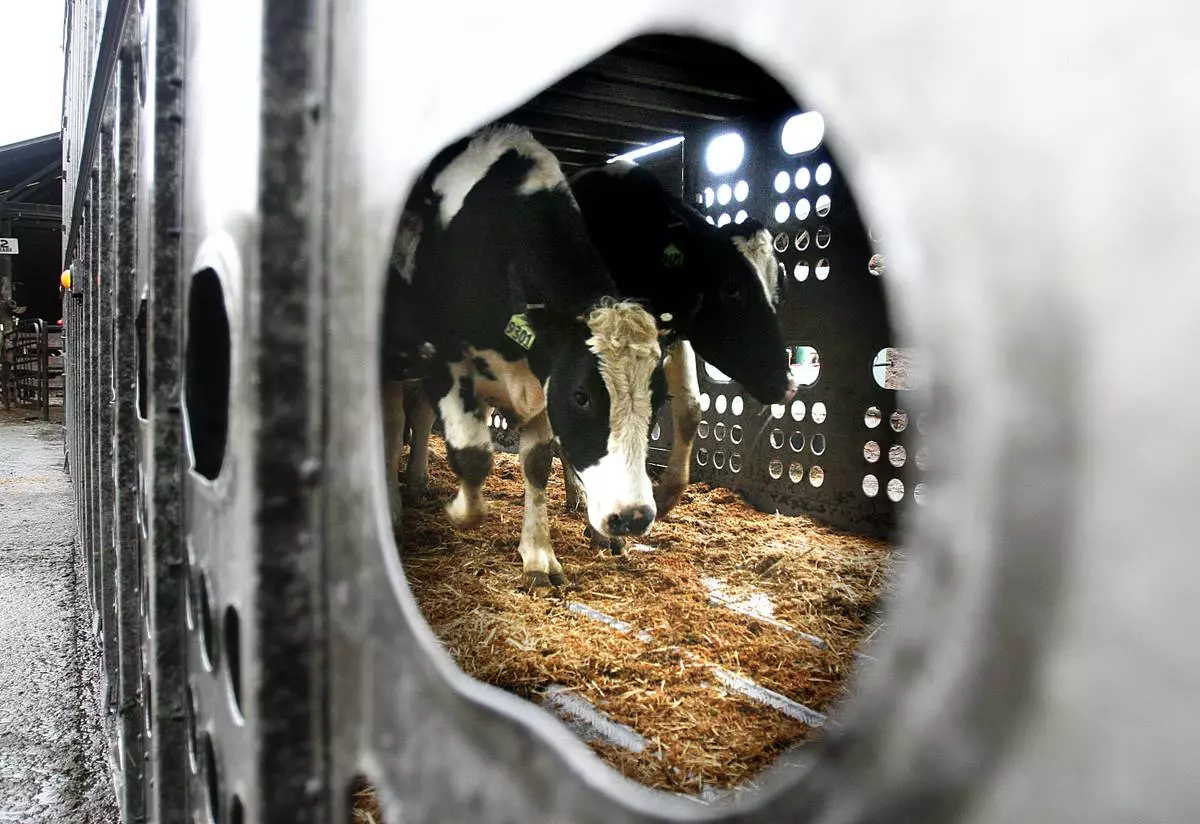
FILE - Holstein heifers are loaded into trucks at a dairy in Oregon on Jan. 21, 2011. Dairy cattle moving between states must be tested for the bird flu virus, U.S. agriculture officials said Wednesday, April 24, 2024, as they try to track and control the growing outbreak. (Kobbi R. Blair/Statesman-Journal via AP, File)
CHARLOTTE, N.C. (AP) — Saing Chhoeun was locked out of his Charlotte, North Carolina, home on Monday as law enforcement with high-powered rifles descended into his yard and garage, using a car as a shield as they were met with a shower of gunfire from the direction of his neighbor's house.
As bullets flew just feet away, Chhoeun took out his phone and started live-streaming the standoff between officials and a man wanted for possession of a firearm by an ex-felon and fleeing to elude.
By the end of the ordeal, five people including four officers and the shooter were dead and more injured in the deadliest single-day incident for U.S. law enforcement since 2016.
The deadly shootout also illustrated how smartphone-wielding bystanders don't always run for cover when bullets start to fly. Increasingly, they look to livestream their perspective of the attack. Experts say the reaction reflects the new role that bystanders play in the age of smartphones.
“It’s become sort of a social norm," said Karen North, a digital social media professor at the University of Southern California Annenberg.
Humans always have had trouble defining the responsibilities of a bystander in a crisis situation, North said. It’s not always safe to intervene, as with the situation in Charlotte, and people can feel helpless when they’re doing nothing. Social media has provided a third option.
The "new responsibility of the bystander” in the digital era is to take a record of what happened on their phones, she said.
“It used to be, ‘If you see something, say something,'" North said. "Now, it’s, ‘If you see something, start recording.’”
Chhoeun had been about to leave for work when U.S. marshals blocked his driveway and he was forced to huddle for safety in his garage, his keys in the ignition of his truck. He crouched by the door knocking for his son to let him in with one hand and recording with the other.
Chhoeun said he never would have risked his life to shoot a video if he hadn't been locked outside. But since he was, he thought: “I might just live it, you know, get everybody the world to see also that I’ve witnessed that. I didn’t see that coming.”
Rissa Reign, a youth coordinator who lives in the neighborhood, said she was cleaning her house when she heard gunfire and walked out to find out what was happening.
She began recording when she heard sirens, thinking she would share the video to Charlit, a Facebook group with 62,000 members where residents post about news and events. She had no idea how serious the situation had become until a SWAT vehicle pulled up behind her.
“Once we were out there, it was, ’Oh, no. This is an active situation,'” she said. “And the next thing you know, you’re in the middle of something way bigger than what you thought.”
Reign saw livestreaming as a way to keep the community informed, she said.
“Seeing that really puts things in perspective and lets you know that is really real, not just reading it or hearing about it in the news," she said of the live stream video. "When you really see it, you can, you know, you know that it’s real.”
Mary Angela Bock, a media professor at the University of Texas at Austin, said there are many reasons why someone might pull out their phone in a situation like the one in Charlotte. There are always going to be people who try to shoot videos because of a human attraction to violence or to catch someone in an embarrassing situation.
“There are also good reasons for good people to respectfully, from a safe distance, record police activity, or any kind of government activity for the sake of citizenship: to bear witness on behalf of other citizens, to bear witness on behalf of the community,” she said. “We’re all in this together.”
Bock, who studies people who film law enforcement, said police leaders often will say to her that they support the idea of respectfully distanced citizen video because it creates more evidence. But that is sometimes easier said than done on the ground during a crisis situation.
“Police officers will often talk about how, and this is true, video doesn’t always show the whole story. Video has to start and stop. Somebody might not have been there in the beginning, somebody might not see the whole thing. One perspective is not the whole perspective,” she said.
“Which is why I advocate to people to respectfully record from a distance because the more perspectives, the better when we triangulate. When we have more than one view of a scene, we have a better idea of what happened," Bock said.
Numerous federal appeals courts have affirmed the right to record police work in public.
Stephen Dubovsky, professor emeritus of psychiatry at the State University of New York at Buffalo, said for someone in that situation, connecting with others through livestreaming might give them a sense of safety.
“You go out there and you might be at risk, but you’re looking at it through your phone," he said. "You're looking at it through the video, you’re one step detached from it.”
In Chhoeun’s video, two agents can be seen sheltering behind a vehicle. Another agent is shown by a fence in his yard, dropping to the ground as what appear to be bullets spray the area around him.
"It was so, so sad for law enforcement," he said. "I know they are not choosing to die on my backyard, but just do their job. And that’s what happened to them, left their family behind."
Willingham reported from Charleston, West Virginia.
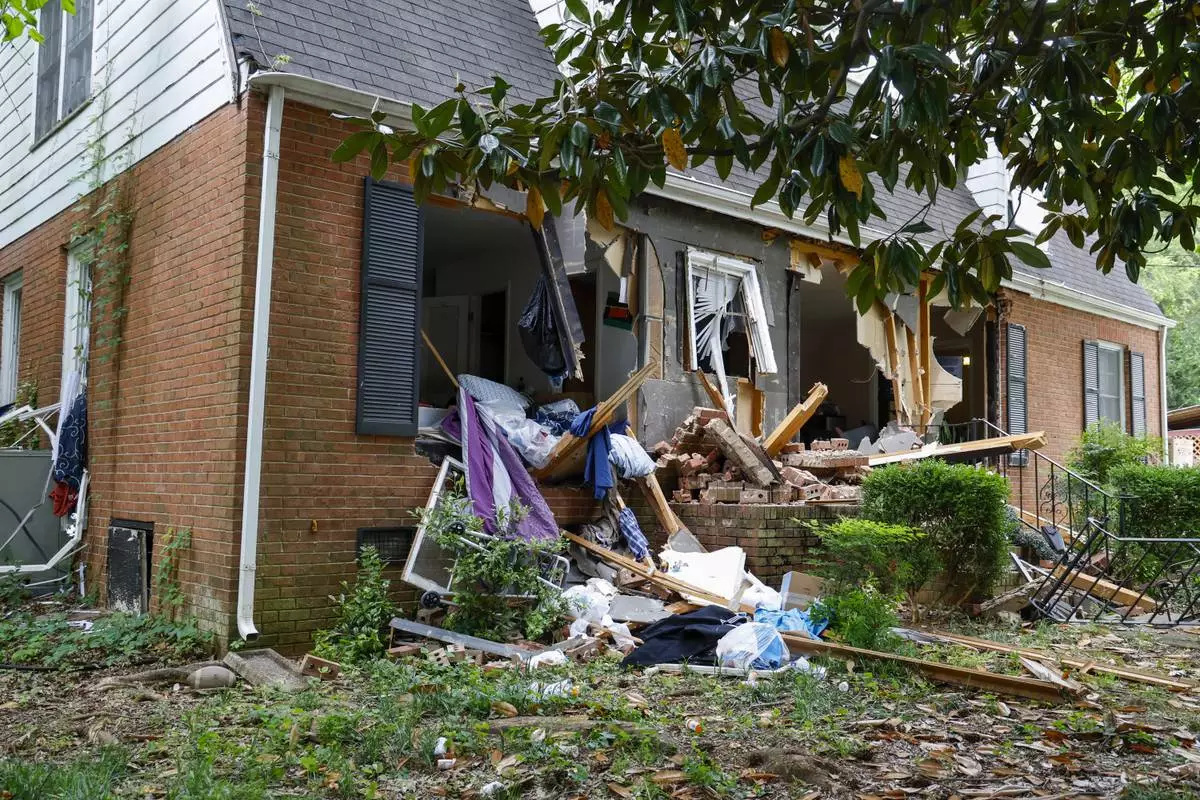
Debris surrounds a home, Tuesday, April 30, 2024, where a shootout between a suspect and officers occurred on Monday, in Charlotte, N.C. Police say a shootout that killed four law enforcement officers and wounded four others began as officers approached the home to serve a warrant for a felon wanted for possessing a firearm. (AP Photo/Nell Redmond)
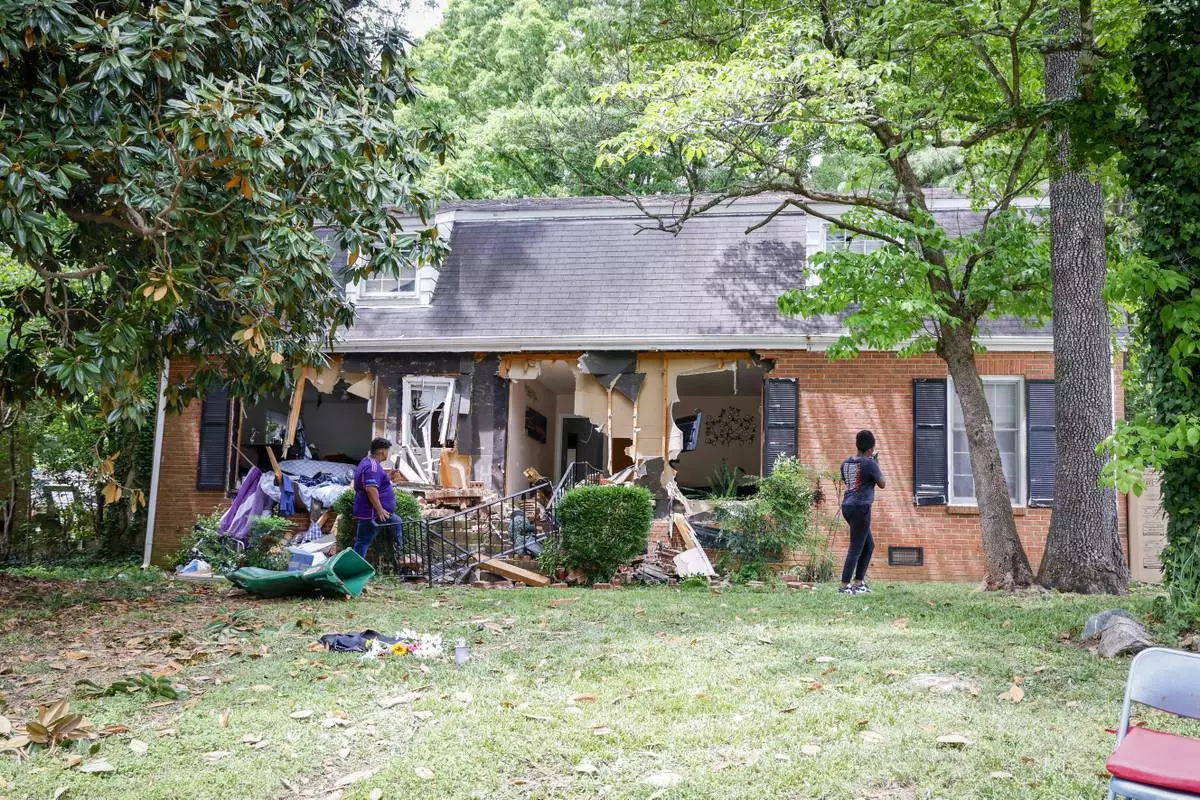
People take photos of a home, Tuesday, April 30, 2024, where a shootout between a suspect and officers occurred on Monday, in Charlotte, N.C. Police say a shootout that killed four law enforcement officers and wounded four others began as officers approached the home to serve a warrant for a felon wanted for possessing a firearm. (AP Photo/Nell Redmond)
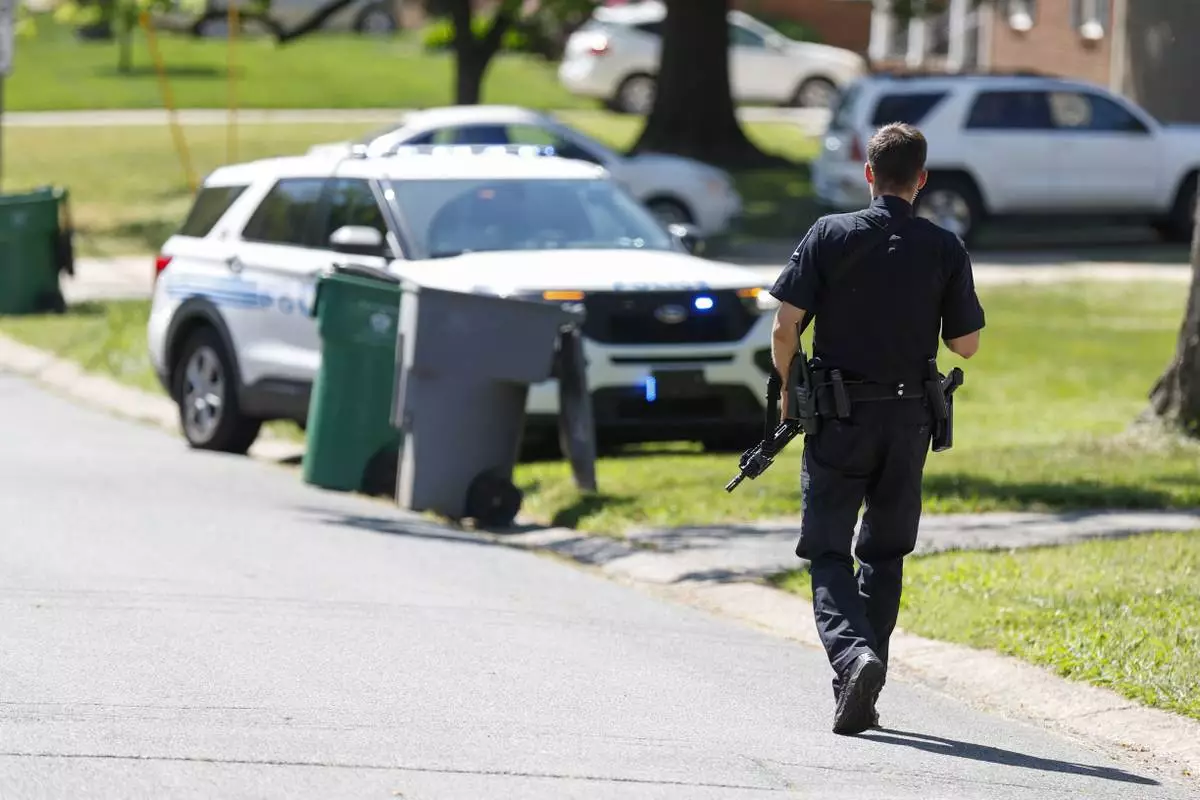
A Charlotte Mecklenburg police officer walks carrying a gun in the neighborhood where a shooting took place in Charlotte, N.C., Monday, April 29, 2024. The Charlotte-Mecklenburg Police Department says officers from the U.S. Marshals Task Force were carrying out an investigation Monday afternoon in a suburban neighborhood when they came under gunfire. (AP Photo/Nell Redmond)
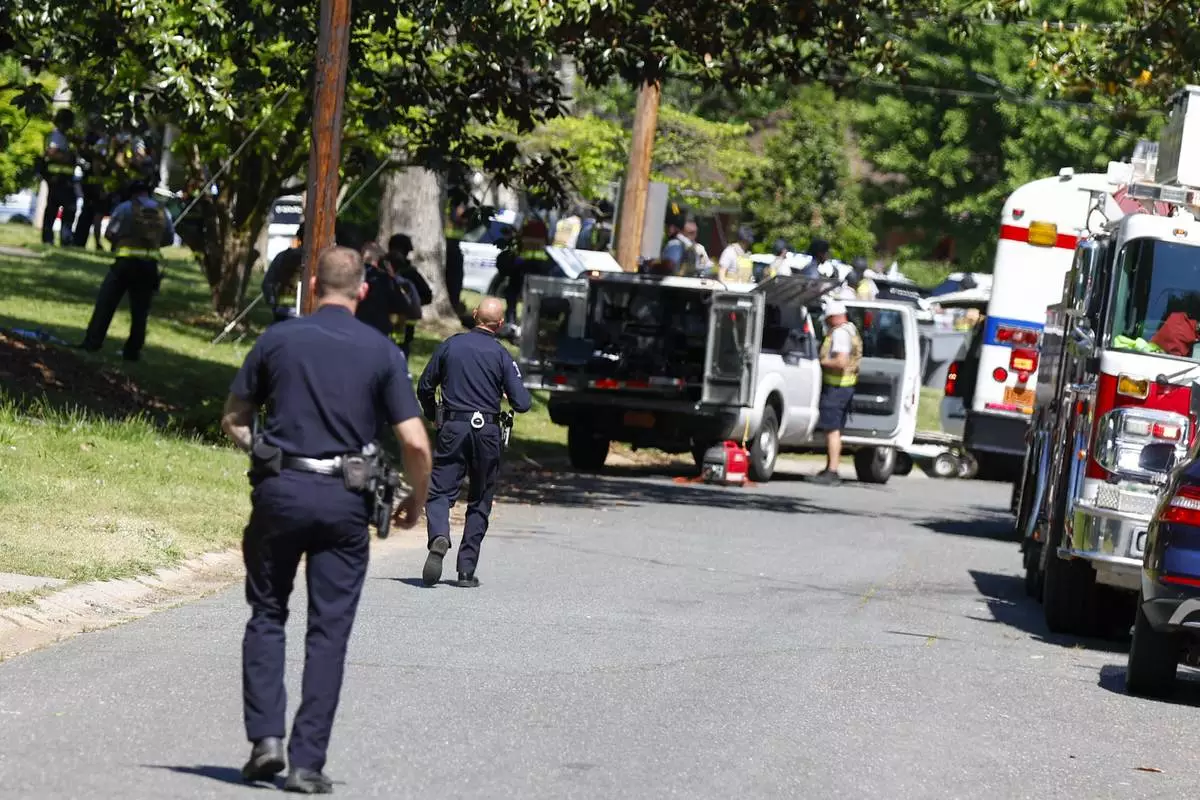
Charlotte Mecklenburg Police Department officers walk in the neighborhood where a shooting took place in Charlotte, N.C., Monday, April 29, 2024. The Charlotte-Mecklenburg Police Department says officers from the U.S. Marshals Task Force were carrying out an investigation Monday afternoon in a suburban neighborhood when they came under gunfire. (AP Photo/Nell Redmond)
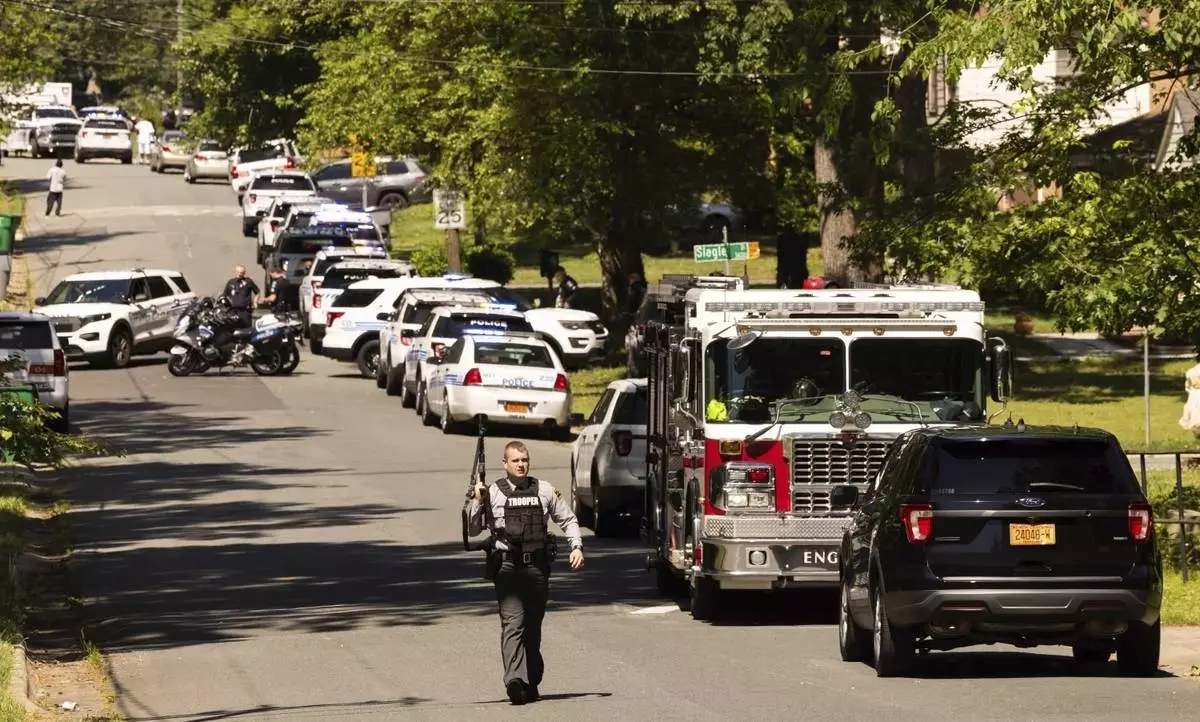
Multiple law enforcement vehicles respond in the neighborhood where several officers on a task force trying to serve a warrant were shot in Charlotte, N.C., Monday, April 29, 2024. (Melissa Melvin-Rodriguez/The Charlotte Observer via AP)
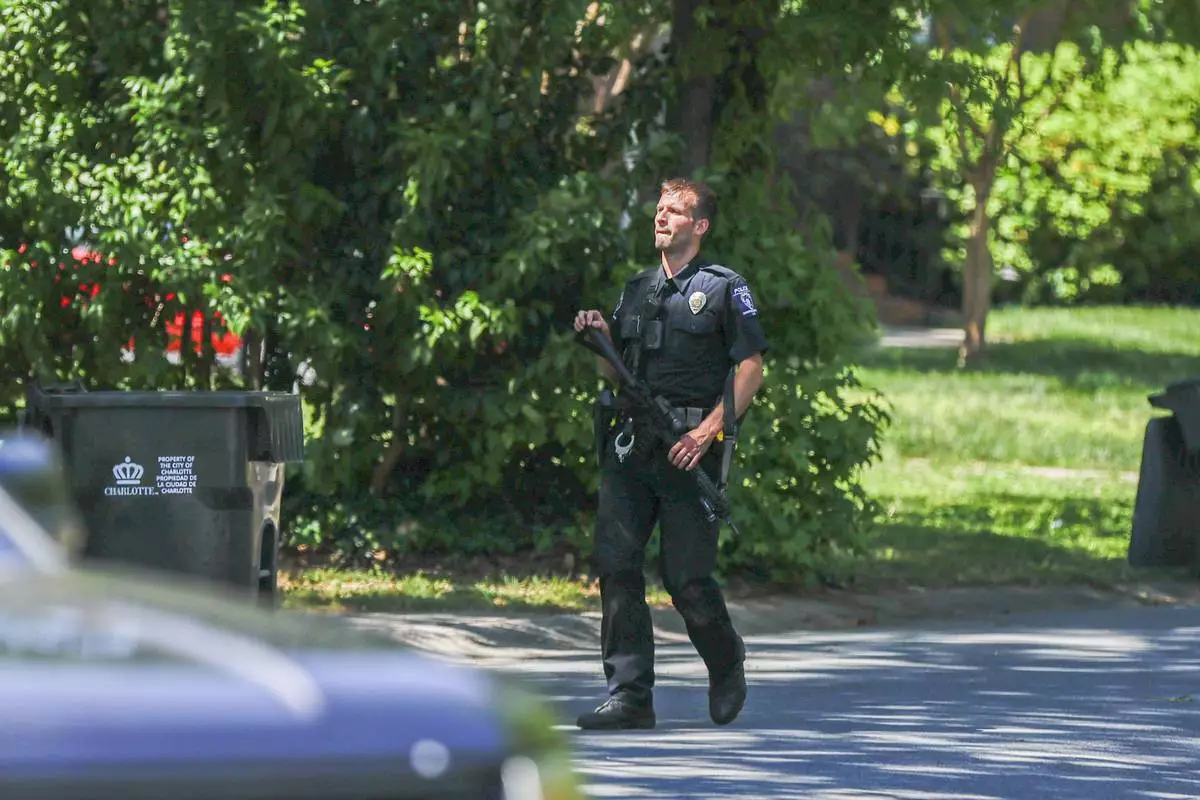
A Charlotte Mecklenburg police officer carries a gun as he walks in the neighborhood where an officer-involved shooting took place in Charlotte, N.C., Monday, April 29, 2024. Police in North Carolina say numerous law enforcement officers conducting a task force operation have been struck by gunfire in Charlotte. (AP Photo/Nell Redmond)










